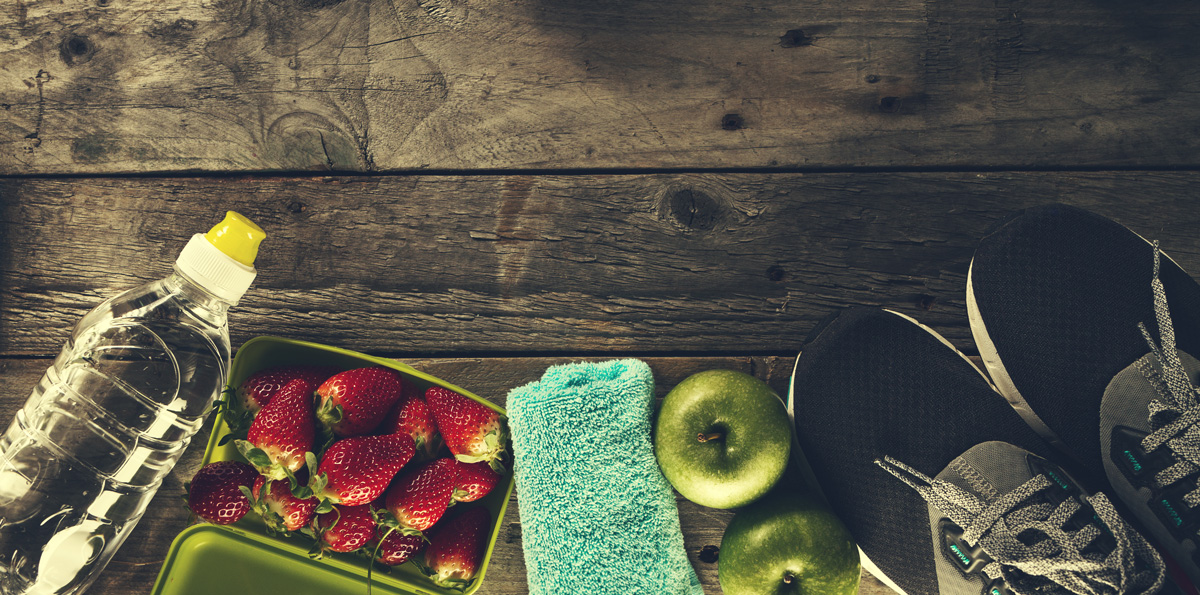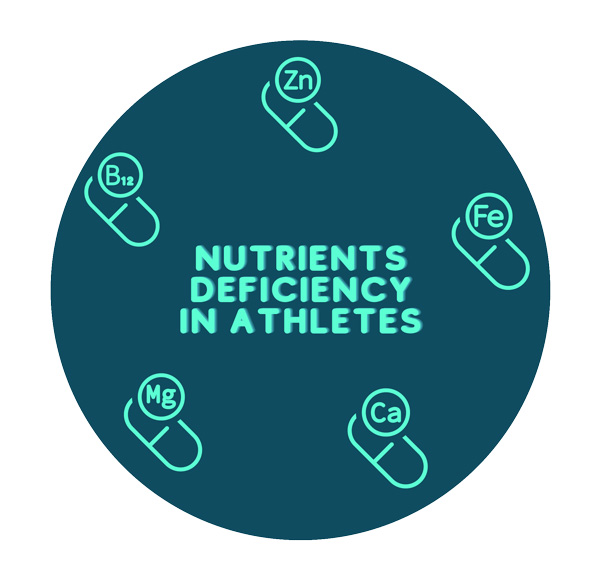The importance of diet in different types of sports, including endurance, strength, and speed sports, is apparent. It is evident that the longer and more intense the physical activity, the more calories and energy are required to be burned. As a result, an athlete's diet should be properly structured to meet the needs. Food provides energy, and the proper diet is essential for an athlete to develop the best performance. Poor nutrition can lead to the reduction of an athlete's efficiency. So the direct correlation between the athlete's diet and a fit body is evident. Follow the principles of a healthy diet designed specifically for an athlete.
60% of success in sports is related to the diet and the foods a participant is getting through their life.
Diet and nutrition have an important role in the time and energy an athlete is spending at a professional level.

An athlete's diet is a type of diet that can provide the nutrients needed for the growth, maintenance, and repair of body tissues before, during, and after workouts or competitions. Furthermore, an athlete's diet can help manage the number of micronutrients and macronutrients to supply enough energy and control your weight depending on the sport type for improving athletic performance.
Six important food groups for athletes are carbohydrates, fats, proteins, vitamins, minerals, water, and electrolytes. The diet composition of an athlete is somewhat different from the diet of an ordinary client. However, the food pyramid is an excellent guide in this regard. The amount of food consumed by each group in the athlete's diet varies depending on the type of exercise, the amount of training, and their process time. Besides, the calories required can be different according to the size, age, sex, and amount of exercise and activity. Therefore, the number of meals and what athletes should eat varies from person to person.
If you want to know the best diet for athletes, get the most out of what our nutritionists present here.
Athletes, especially those who do high-intensity sports, need to include a healthy diet for better performance. Short–term intensive activity will need energy production through anaerobic ways because the exercise is as fast as the body can't access enough oxygen. Anaerobic activities use more glucose and glycogen.
The usage of glycogen in sports such as soccer, basketball, and swimming is higher than in other sports.
Sports and activities such as jogging, dancing, gymnastics, and cycling are medium-intensity activities in which half of the fuel is from muscle glycogen. Another half is from blood sugar and fatty acids.
Low intensive activities like walking are based on produced energy from aerobic pathways. They burn more fat than other workouts, which is why walking can be useful and hopeful for weight loss.
The longer you exercise, the greater the share of fat in energy production. That is why taking nutritional strategies or having an athlete's diet is a necessity to optimize recovery.
For long-term endurance activities like orienteering, triathlon, rowing, water polo, ultimate Frisbee, and ultimate marathon, the fat will produce 60–70 percent energy. However, carbohydrates' availability for making energy pathways is an important factor in the burn of fats and fat metabolism. Therefore, blood sugar and muscle glycogen are limiting factors for any kind of sport and exercise.
If the BMI range is:
- In the normal range, the current weight can be used to plan a diet.
- Under the normal range, we use a BMI of 22.
- More than 25, we should examine the amount of time for working out.
If athletes have started exercising for a long time, we will test their body composition and focus on their body fat and ask them if they want to lose weight or not. Pro athletes' BMI may be more than the normal range due to their muscle mass.
There are two types of athletes:
Endurance athletes
Strength athletes
The number of macronutrients and energy intake and their expenditure is different from sport to sport, so the dietitians should consider the athletes' adequate ones.
Carbohydrates, proteins, and fats are the probable fuels needed for muscle contraction and shrinkage.
The duration and intensity of sports and workouts define the ratio of each fuel's consumption to be burnt during exercise. Level of physical fitness, athlete's gender, and food intake are other factors determining exercise fuel.
Energy: The amount of energy depends on the type of sport and exercise they are taking. It will be calculated based on protein intake.
A typical athlete who works out about 30 – 40 min per day three times a week needs about 25-35 kcal/kg body weight or 1800-2400 calories.
A professional athlete may need 150- 200 kcal/kg of body weight based on their activity's term and intensity. You can contact your nutritionist to know how many calories you need due to your workout.
Fluids: Drinking fluids regularly can help maintain body temperature at the right level. Athletes who work out in hot places can lose a lot of water. The imbalance between loss and intake of fluids can impact the body's functions due to dehydration. Dehydration can result from heatstroke. Men sweat more than women; therefore, they need more water. Dehydration of more than 3-4% typically impairs endurance exercise function. Drinking cold water is better than warm because it can reduce body temperature and blood flow to peripheral tissues.
Low intensity - medium-term workouts: 5 – 7 g per kilogram of bodyweight
Medium intensity: 7- 12 g per kilogram of bodyweight
High intensity: 10 – 12 g per kilogram of bodyweight
Glucose and glucose stored, called glycogen, are two types of carbohydrates that produce major energy. During endurance sports that last more than 90 minutes, like a marathon, muscle glycogen stores will gradually be emptied. Therefore, continuing the exercise with high intensity cannot be possible. This situation is called "hitting the wall" when athletes are exhausted and have to stop or lower their speed. There are diets carb-loading diets to prevent fatigue.
Train low strategy is a high-fat diet with low cholesterol for about two weeks along with regular exercises. Immediately after that, there is a high carb diet with lower exercises for 1-3 days before the event to increase endogenous muscle glycogen.
The range of protein intake is 1.2-1.7 (up to 2) grams per kilogram of bodyweight.
Studies have shown that using food-based proteins is better than protein supplements.
Low and medium intensity: 6 and more grams per kilogram of bodyweight
High intensity: 8 – 10 g per kilogram of bodyweight
1.4 – 1.7 gram per kilogram body weight, maximum: 2 g per kilogram of bodyweight
Protein for Bulking:
For athletes interested in gaining muscle and in the duration of bulking, intake of protein is recommended 1.2 – 2 grams per kilogram of body weight. You can also consider high-protein smoothies in your diet using protein powders.
Studies have shown that at least 30-gram high biological value protein in every meal can make protein production to the maximum level.
The nutritionists and dietitians calculate the calories equal to the amount of protein and carbohydrates. After that, they will figure out how many grams an athlete needs to get from fats. It is about 20-35 % of total calories. Due to the increase in the intensity of the sport, fat burning will decrease. The fat burning in the running is higher than in cycling.
Stress and pressure on muscles can lead to inflammation, bruises, and tissue destruction. A diet high in omega-3, MUFA, etc., has anti-inflammatory effects and can delay muscle pains. Fruits and vegetables, e.g., broccoli, spinach, tomatoes, chia seed, linseed, walnut, cow meat, and green peas, are good sources of omega-3 fats. Monounsaturated fatty acids (MUFA) like olive oil, peanut, canola oil, and avocado can inhibit and reduce inflammation through particular pathways.

Athletes should eat meals three and a half or four hours before each workout to prevent gastrointestinal consequences and side effects such as vomiting, indigestion, and nausea.
It also helps balance the insulin level in the blood and prevent hypoglycemia and drop in blood sugar. This meal should be low-fat and low-fiber. It is suitable to have a reasonable amount of salad and vegetables.
Athletic people can have a small high carbohydrate, low fat, moderate protein, and low fiber snack, especially from a group of whole grains. This snack helps regulate the glucose in the blood and prevent hypoglycemia in the first hour of exercise. You have to avoid consuming carbonated and sugar-added drinks.
If exercise lasts more than 1 hour, 0.7 grams of carbohydrate per kilogram of body weight is required for each hour of workout. Sports drinks containing 6-8 percent carbohydrates can be used during workouts.
If the exercise duration exceeds three hours, the athletic person may need 90 grams of carbs per hour during the exercises.
The benefits of consuming carbohydrates during exercise:
♦ Maintenance of a normal range of glucose
♦ Supplying adequate fuel for sports activities
♦ Increasing the performance during exercise
Athletes should avoid consuming high glycemic index foods, foods high in protein, fiber, fat, and drinks with more than 8 % glucose.
At the end of the workout, athletes should make up and replace the depleted glycogen and stored carbs in their muscles.
Dietitians have recommended that 20 – 30 minutes after the physical activity, the athletes should intake 1-1.5 grams per kilogram of body weight from high glycemic carbohydrates and 15-25 g of high biological value protein. This protein can help to revive and regenerate muscle proteins.
Athletes should drink adequate water, fluids, and sports drinks so that the color of urine turns to pale yellow.
The athletic diet should contain an adequate amount of sodium to make up for sodium loss during sweating.
The athletes should use sufficient portions of vegetables and fruits to maintain the required potassium.
Athletes should not skip any meals because it can reduce the energy needed for their bodies.
Athletes should absolutely avoid drinking alcohol before physical activities, during meals, and after exercise.
Standard and common sports drinks supply water, carbohydrate, sodium, and potassium. It should be considered that the density of carbohydrates in natural juice drinks is higher than in sports drinks, and due to the density of carbs, the natural juice drinks should be diluted in half.
The grape juice should be diluted by more than half.
Synthetic drinks, sodas, energy drinks, and other drinks should be diluted based on their carbohydrate density contents shown on their labels.
One of the best aims of an athlete's diet is to gain muscles and manage weight.
The weight gain process should be steady and continues and prevent excess fat deposition. A weight gain of more than 2 pounds per week can lead to an increase in body fat.
Men athletes can have a moderate increase in weight, about 0.5 – 1 pound lean mass in a week, and the range for women is 0.25 - 0.75 pound of body mass.
The increase in energy expenditure should be besides strength training that is needed for muscle growth.
High-calorie foods like nuts, nut butter, and avocado are good sources for meals and snacks. Bens, lentils, lean meats, and dairy products can provide about 250-500 more calories each day.
The amount of weight gain depends on genetics, the number of sessions and recoveries, and the type of exercise.
One of the disadvantages of weight gain is the ratio of water and glycogen, which can be an obstacle to sports performance.
Anorexia Athletica (AA) is a kind of eating disorder that is especially for athletes. Athletic persons who participate in sports such as swimming, long-distance running, yoga, and gymnastics are more susceptible to Anorexia Athletica.
FAT or female athlete triad is a syndrome for athletic women who follow a long-term diet with low energy intake, Amenorrhea or the absence of menstruation, and osteoporosis.
AED athletic energy deficit is also known as Relative Energy Deficiency in Sport (RED-S). It is a syndrome related to an increased risk of bone fractures, decreased concentration, irritability, and depression. Low energy expenditure is connected to Amenorrhea and ovarian suppression, which is related to sports inefficiency.
MD or muscle dysmorphia, also known as bigorexia, is a condition in that you may notice something wrong with your body shape. MD can cause an eating disorder in athletes who feel their muscles are not big enough. So they turn to strict diets, high protein supplements, overdose supplements, and steroid hormones.
Hard and intense endurance exercises can lead to a temporary reduction of serum ferritin and hemoglobin. This condition is called sports anemia. This situation is due to the increased plasma volume.
Athletes who follow diets without some nutrients groups like paleo, keto, and vegan diets are more likely to have deficiencies in Calcium, Zinc, Iron, and Vitamin B12.
Athletes on a strict vegan diet can suffer from B12 deficiency, and they have to take some supplements.
Studies in 2013 have shown deficiencies in athlete men such as vitamin A 44%, Vitamin C 80%, vitamin D 92%, Folate 84%, Calcium 52%, and Magnesium 60%.
The deficiencies in professional athlete women based on studies conducted in 2010 are folate 48%, Calcium 24%, Magnesium 19%, and Iron 4%, which can lead to increased risk of injury.
Increasing the edible iron and iron supplementation is the only way to cure the deficiency and recover iron status.

The ideal weight loss is about 1 pound (0.5 kg) per week. The best body fat percentage for men and women is 5% and 12 %, respectively. Sports dietitians can help athletes find out the best level of fat based on the specifications. The weight loss should be appropriately organized because of crash diets. Cutting calories can have harmful effects on body functions.
An athlete's diet for fat loss is something low carb, sugar-free, and high in fiber that can be very helpful. The dietitians and nutritionists design the protein distribution during the day to prevent calorie collection and high intake, leading to an abnormal energy-producing way.
Other tips for weight loss are alcohol withdrawal, eating slowly, and getting enough sleep and fluids.
The LCHF diet is a low carb (under 25%) and high fat (more than 60 % of total daily energy) diet. It leads to using muscle fats during exercises and can increase sports performance by less dependence on glycogen, and LCHF can strengthen muscle capacity for fat burning for five days.
The positive benefits of consuming athlete plant-based foods after exercise or having an athlete vegan diet are anti-inflammatory and antioxidant effects, especially in purple and red fruits or vegetables. Tart cherry juice and its antioxidant components can reduce inflammation, muscle injuries, and oxidative stress after marathon running.
A diet based on the metabolism of fats instead of nutrients can be a successful way for fat burning and losing weight, but how can an athlete follow a keto diet? Can an endurance athlete use a keto diet? Keto diet and ketosis do not have a significant effect on improving and enhancement of endurance sports. Elimination of carbohydrates results in less fuel. Starting a keto diet needs much more time to adapt to the body's metabolism pathways to choose the nutrients as a fuel to produce energy.